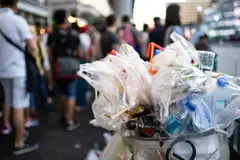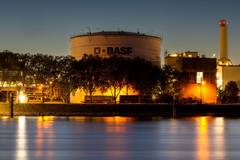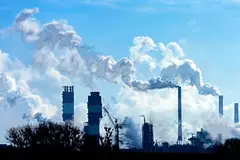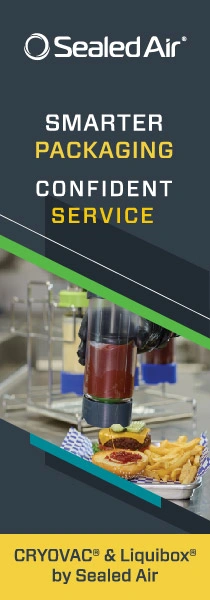Resynergi relocates chemical recycling plant after California backlash
Key takeaways
- Resynergi will move operations from Rohnert Park, citing incentives and community fit.
- Plans for a California site faced strong opposition over environmental and health risks.
- The new industrial location offers better regulatory support and scaling opportunities.
Resynergi, a chemical recycling start-up, has announced it will move operations from Rohnert Park, US. The company cites reasons such as economic incentives and a suitable community.
Resynergi already operated a small R&D site in Rohnert Park, but had proposed to establish a commercial facility next to a high school, triggering weeks of neighborhood backlash over environmental and health concerns.
The start-up uses microwave technology to break down plastic packaging waste into oil and fuel. The company says the decision to move location is to “scale the technology and meet growing demand.”
“Resynergi is entering its next phase of growth. Our time in Sonoma County was dedicated to R&D and incubation, which allowed us to refine our technology and validate its performance. The move to a new location is about scaling operations to meet demand,” a spokesperson tells Packaging Insights.
“We are still in the early stages of evaluating several potential sites. Until final decisions are made — and we’ve engaged with regulators, partners, and community stakeholders — it would be premature to announce a specific location.”
The company also states that the undisclosed new location offers a better regulatory environment for permitting advanced recycling. Moreover, it boasts “targeted tax and economic development incentives” and the infrastructure needed to scale its technology.
Community fit
Parents and neighbors of the proposed site in Rohnert Park stated they were alarmed by the proposed site permit, which included chemicals like arsenic, lead, and mercury.
.webp) Resynergi says that emissions from its AMP technology are no different than everyday car exhaust fumes.But the Resynergi spokesperson says: “Our Rohnert Park chapter was a success story — a vital R&D incubation phase that gave us the foundation to expand. The move is about scaling responsibly, and maintaining focus on what’s next.”
Resynergi says that emissions from its AMP technology are no different than everyday car exhaust fumes.But the Resynergi spokesperson says: “Our Rohnert Park chapter was a success story — a vital R&D incubation phase that gave us the foundation to expand. The move is about scaling responsibly, and maintaining focus on what’s next.”
They also note that they understand public “perception” of the move, but stress that the company had plans to move before community pushback.
“There was some misunderstanding about the impact of transforming our R&D facility into a demonstration facility. We have taken the decision to move that demo equipment to our new site.”
A community petition demanded that the permit for the proposed facility be stopped and received over 3000 signatures.
Moreover, the spokesperson highlights that Resynergi’s Accelerated Microwave Pyrolysis (AMP) system is safety-certified by an OSHA-approved Nationally Recognized Testing Laboratory as explosion-proof. PMO Global Services, a global risk management consultancy, classified the system as “low-risk” to people and property.
Chemical recycling debate
Many in the industry assert that chemical recycling is a potential solution to the plastic waste crisis, though others are critical of the pollution the process can produce.
The Resynergi spokesperson outlines that there are several misconceptions about the company’s chemical recycling process. The first misinterpretation is that its patented AMP technology involves incineration.
“It does not. It’s an oxygen-free system where plastic is thermally decomposed using indirect heat. The process harnesses microwave energy to reduce plastic back down to base molecules. Unlike incineration, pyrolysis involves no fire and no smoke.”
The spokesperson argues that the misconception stems from an “outdated” classification that governs emissions. “It is just a bureaucratic category label that will eventually be updated.”
Resynergi highlights that all emissions created during the process are known to the public as they are commonly found in car exhaust fumes. Toxic contaminants propylene and 1,3-butadiene were presented in the report for public awareness.
Because of the presence of 1,3-butadienes, the company invested in the “industry-leading” Questor thermal oxidizer, which has 99.99% destructive capability of the toxic air contaminant, explains the spokesperson.
However, some NGOSs, such as the Global Alliance for Incinerator Alternatives (GAIA), label the process a “false solution.”
In an interview with Packaging Insights, Weyinmi Okotie, clean air program manager at GAIA Africa, said: “We need to be careful about such technology. Most of the time, it’s a false solution that wants us to keep producing waste. It competes with and undermines mechanical recycling and waste reduction efforts.”
Resynergi has yet to announce the new location. The spokesperson concludes: “What we can share now is that any move will be carefully planned, fully permitted, and aligned with our long-term growth strategy. We are committed to transparency, and we will provide updates as soon as details are confirmed.”











